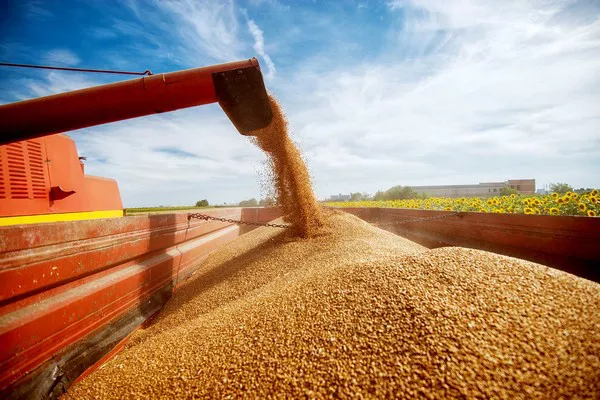Grains play a fundamental role in global food security and economic stability. As the backbone of sustenance for billions, understanding the dynamics of grain production and trade is paramount. In this article, we embark on an exploration of the world’s top ten grain exporting countries, delving into their agricultural landscapes, trade policies, and contributions to the global food market.
World’s Top 10 Grain Exporting Countries
1. United States of America:
The United States stands tall as the world’s leading grain exporter, owing much of its dominance to its vast agricultural expanse and advanced farming techniques. Known as the “Corn Belt,” states like Iowa, Illinois, and Nebraska drive the nation’s corn production, while wheat cultivation flourishes in states like Kansas and North Dakota. The U.S. also boasts substantial exports of soybeans, further solidifying its position in the global grain trade.
2. Brazil:
Brazil has emerged as a formidable force in grain exports, leveraging its abundant arable land and favorable climatic conditions. The country’s soybean production, predominantly in states like Mato Grosso and Pará, catapults it to the forefront of the global market. Additionally, Brazil’s corn and wheat exports contribute significantly to meeting international demand, establishing it as a key player in the grain trade.
3. Argentina:
Argentina’s fertile Pampas region serves as the nucleus of its grain production, particularly for soybeans and wheat. With vast expanses of fertile land and a robust agricultural sector, Argentina consistently ranks among the top grain exporting countries. Its strategic geographical location allows for efficient trade routes, further enhancing its competitiveness in the global grain market.
4. Canada:
Canada’s expansive prairies, notably the provinces of Saskatchewan and Alberta, form the cornerstone of its wheat production. Renowned for its high-quality grains, Canada maintains a strong presence in international markets, supplying not only wheat but also barley and canola. The country’s commitment to sustainable farming practices underscores its reputation as a reliable grain exporter.
5. Russia:
Russia’s vast landmass encompasses diverse agroclimatic zones, facilitating the cultivation of various grains, including wheat, barley, and corn. The Black Sea region, with its fertile soils, plays a pivotal role in Russian grain exports. Despite occasional challenges such as adverse weather conditions, Russia remains a significant player in the global grain trade, often competing closely with the United States for market share.
6. Ukraine:
Ukraine’s agricultural sector has experienced rapid growth in recent years, propelled by fertile soils and favorable agricultural policies. The country’s vast plains, particularly in regions like the Dnieper Lowland and the Black Sea coast, foster extensive grain cultivation, with wheat and corn leading the export charts. As Ukraine continues to invest in modernizing its agricultural infrastructure, its prominence in the global grain market is set to rise.
7. Australia:
Australia’s temperate climate and sophisticated farming practices make it a significant player in the global grain trade. The vast wheat fields of Western Australia and the fertile plains of New South Wales contribute substantially to the country’s grain exports. Despite occasional challenges such as droughts and fluctuating global demand, Australia maintains its position as a reliable supplier of high-quality grains to international markets.
8. France:
France, with its rich agricultural heritage and diverse landscapes, serves as a key grain exporter within the European Union. The fertile plains of regions like the Paris Basin and the Loire Valley yield substantial wheat and barley crops. France’s adherence to stringent quality standards and sustainable farming practices enhances the appeal of its grains in global markets, cementing its position as a prominent player in the global grain trade.
9. Kazakhstan:
Kazakhstan’s vast steppes and plains offer ideal conditions for grain cultivation, particularly wheat and barley. The country’s strategic location at the crossroads of Europe and Asia facilitates trade routes, bolstering its grain export capabilities. Despite challenges such as climatic variability and infrastructural constraints, Kazakhstan’s agricultural sector continues to evolve, positioning it as a significant contributor to the global grain market.
10. Argentina:
Argentina, blessed with fertile lands and diverse agroclimatic regions, is a major player in the global grain trade. The Pampas region, with its vast plains, serves as the epicenter of Argentina’s grain production, particularly for soybeans and wheat. Robust agricultural policies and investments in infrastructure have propelled Argentina’s agricultural sector forward, making it a reliable source of grains for international markets.
Conclusion
The world’s top ten grain exporting countries form the backbone of global food security, supplying essential commodities to nations around the world. From the vast expanses of the United States to the fertile plains of Argentina, each country brings unique strengths to the global grain trade. As the demand for grains continues to rise amid growing populations and changing dietary preferences, these nations will play an increasingly vital role in ensuring a sustainable and secure food future for all.
You Might Be Interested In:


























